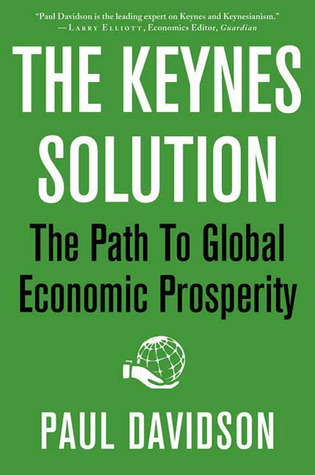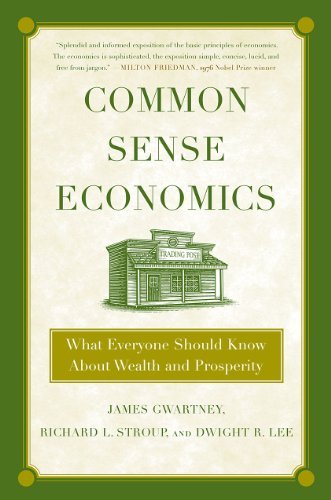
The Keynes Solution: The Path to Global Economic Prosperity
Book Description
Imagine a world where economic chaos gives way to prosperity, powered by a revolutionary approach to money and policy. In "The Keynes Solution: The Path to Global Economic Prosperity," Paul Davidson unveils a dynamic framework that challenges the status quo, advocating for a bold return to Keynesian principles. With soaring inequality and recession looming, the stakes couldn't be higher. Davidson argues that governments hold the key to revitalizing economies by prioritizing demand and ensuring jobs for all. Can the ideas of a long-dead economist hold the answers to our modern crises? Discover the blueprint for change that could reshape our future.
Quick Book Summary
"The Keynes Solution: The Path to Global Economic Prosperity" by Paul Davidson powerfully reasserts the relevance of John Maynard Keynes’ economic ideas in the face of 21st-century challenges. Davidson critiques the prevailing neoliberal orthodoxy and explains how, in times of economic crisis, markets cannot self-correct fast enough or fairly to restore prosperity. Reiterating Keynes’s focus on uncertainty, aggregate demand, and full employment, Davidson advocates active government intervention through fiscal policies. He outlines a pragmatic framework for governments to create jobs, stabilize currencies, and reduce global financial instability. Arguing that debt fears are overstated and austerity harmful, Davidson offers a practical roadmap for addressing inequality, stimulating demand, and achieving sustained global growth, making this book essential reading for understanding and solving modern economic woes.
Summary of Key Ideas
Table of Contents
Keynesian Economics versus Neoliberalism
Davidson opens by contrasting the Keynesian tradition with the dominant neoliberal economic thought that has shaped global policy since the late 20th century. He underscores that neoliberalism’s faith in self-regulating markets and minimal government intervention has repeatedly failed to prevent or resolve severe economic downturns. Davidson revisits Keynes’s insights from the Great Depression, highlighting how laissez-faire approaches ignore the realities of uncertainty and imperfect information. In emphasizing Keynes’s legacy, Davidson reminds readers that widespread unemployment and underutilized resources are not inevitable, but the result of policy choices.
The Role of Government in Stimulating Demand
A central theme of the book is the vital role governments must play in boosting aggregate demand, especially during downturns. Davidson stresses that when private spending declines, public stimulus—through infrastructure investments, public works, and social programs—can rejuvenate sagging economies. He offers specific policy tools, such as deficit-financed spending and direct job creation, arguing these not only reduce unemployment but also help generate multiplier effects throughout the economy. Davidson makes a pragmatic case for fiscal activism, showing that government intervention is essential for full employment and long-term stability.
Managing Uncertainty and Financial Instability
Addressing financial instability, Davidson builds on Keynes’s insight that uncertainty is a permanent feature of market economies, making periods of volatility inevitable. He critiques the current global financial architecture, exposing its susceptibility to destabilizing capital flows, speculative bubbles, and panic-driven crashes. Davidson proposes regulatory reforms to tame speculation, discourage short-termism, and build more resilient institutions. Crucially, he advocates international coordination to manage exchange rates and capital movements, believing that unregulated financial markets often export crises rather than contain them.
Global Solutions to Economic Inequality
The book also confronts the challenge of global inequality. Davidson draws connections between persistent unemployment, wage stagnation, and the widening gap between rich and poor. He argues that fair labor markets, progressive taxation, and international support for developing economies can spread prosperity more equitably. The Keynesian vision, according to Davidson, is not only about growth, but also about shared advancement—ensuring that the gains from economic recovery benefit the many, not the few. The author emphasizes solidarity, both within and among nations, as vital to global economic stability.
The Myth of Government Debt and the Case Against Austerity
Finally, Davidson tackles misconceptions regarding government debt and public deficits. He refutes the alarmist rhetoric that treats sovereign debt as inherently dangerous, instead explaining that in a sovereign currency system, well-targeted public spending can be safely financed. Austerity, he argues, is economically damaging and self-defeating, deepening slumps and delaying recovery. By drawing on Keynes’s enduring wisdom, Davidson contends that embracing fiscal flexibility and rejecting austerity are essential for curing persistent unemployment and revitalizing economic prospects worldwide.
Download This Summary
Get a free PDF of this summary instantly — no email required.





